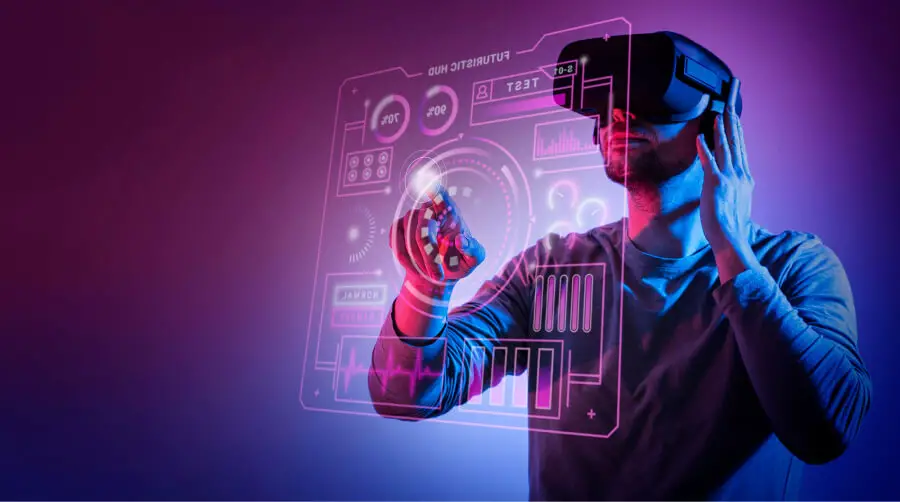Acer Swift AI 16
MSRP $1,250.00
“The Acer Swift AI 16 has a beautiful OLED display, and that scores some serious points.”
Pros
Excellent OLED display
Solid productivity performance
Good, if slightly cramped, keyboard
Quality build
Attractive price
Cons
Mediocre battery life
Touchpad is too small
Slightly aesthetic
Table of Contents
Specs and pricing
Design
Keyboard and touchpad
Webcam and connectivity
Performance
Battery life
Display and audio
An expansive OLED display saves the day
There’s an argument to be made for laptop that’s reasonably thin and light while still offering up a bunch of screen real estate. While some 16-inch laptops are thicker and heavier thanks to power-hungry components, others manage to be just fast enough to support the multitasking made possible by a larger display while remaining reasonably portable.
The new Acer Swift AI 16 is one such laptop. It uses Intel’s latest Lunar Lake chipsets to provide reasonably fast and much more efficient performance, mated with a 16-inch OLED display. It’s also reasonably priced, making it an attractive option for road warriors who need to do more than one thing at a time.
Acer Swift AI 16 Dimensions 14.02 x 9.92 x 0.58-0.69 inches Weight 3.37 pounds Processor Intel Core Ultra 7 256V Graphics Intel Arc 140V RAM 16GB unified memory Display 16.0-inch 16:10 2.8K (2880 x 1800) OLED, 120Hz Storage 1TB SSD Touch Yes Ports 2 x USB4 with Thunderbolt 4 Wireless Wi-Fi 7 and Bluetooth 5.4 Webcam QHD (2560 x 1440) with infrared for Windows 11 Hello Operating system macOS Sequoia Battery 70 watt-hour battery Price $1,250
As of when this review is being written, I’m seeing just one available configuration of the Swift AI 16. It costs $1,250 with an Intel Core Ultra 7 256V chipset, 16GB of RAM, a 1TB SSD, and a 16-inch OLED display.
That’s an attractive price for a well-built laptop with a beautiful display. The Apple MacBook Air 15 and Microsoft Surface Laptop 7 both start out lower with less RAM and storage, but they get more expensive as you configure more options.
Mark Coppock / Digital Trends The Swift AI 16 is a reasonably sized laptop given its 16-inch display, with display bezels that are small enough to keep its width and depth in check. It’s at most 0.69 inches thick, which is slightly thinner than Microsoft’s Surface Laptop 7 with its 15-inch display and a lot thicker than the Apple MacBook Air 15 that’s an insane 0.45 inches thick with a 15.2-inch panel. And the Acer is reasonably light at 3.37 pounds, compared to the Surface Laptop 7’s 3.67 pounds and the MacBook Air’s 3.3 pounds. Yes, the Swift AI 16 will take up some space in your backpack, but it won’t weigh you down.
Its construction is just okay, though. Its chassis is aluminum, as is the lid, but while the keyboard deck resists flexing the lid is a bit bendable. The Microsoft and Apple laptops are more solid, which certainly comes from the denser construction. The Acer isn’t exactly bad, though. It’s not like you’ll be concerned that it will fall apart anytime soon. I’d say it’s just good enough, and its price helps.
Aesthetically, the Swift AI 16 isn’t exactly exciting. It’s all-black, with a chrome Acer logo on the lid and minimal bling on the inside. The edges are streamlined with a flair to the rear side where the ports are located. Most laptops are minimalist today, but the Surface Laptop 7 and MacBook Air 15 do give off more of an elegant vibe. Again, the Swift AI 16 is good enough, but it’s nothing special.
Mark Coppock / Digital Trends The keyboard has snappy switches with a light touch, something I tend to favor. It’s a little like the Apple Magic Keyboard in this respect, making it comfortable for long-term typing (like writing this review). However, the keycaps are a little smaller and the spacing is more cramped than it needs to be, because Acer squeezed in a small numeric keypad that’s a bit anachronistic today. I suppose if you input a bunch of numbers then you’ll appreciate it, but I think a lot of people would rather have had a more expansive keyboard. The keyboard props up at a bit of an angle when you open the lid, which is nice.
The touchpad is smaller than it could be, as well, and because of the numeric keypad it’s not centered enough. Acer could have utilized some additional space on the palm rest to make it considerably larger, and that’s something you’ll get from the MacBook Air 15’s excellent Force Touch haptic touchpad. In addition, the Acer touchpad is mechanical, and it’s okay. But I look forward to when haptic touchpads make their way to more laptops. The one interesting feature is an LED that lights up in a cool pattern when the Copilot key is engaged, but it seems like more of a gimmick than anything.
The display is touch-enabled, and I appreciate it more given the smallish touchpad. Many users won’t really care about touch, but it’s a nice feature to have with no meaningful downside.
Connectivity is very good, with a mix of fast, modern ports and legacy connections. You’ll give up one of the USB4 ports for power, something that both the MacBook Air 15 and Surface Laptop 7 avoid with their dedicated power connectors. However, thanks to the extra USB-A and HDMI ports, the Acer has better overall connectivity than those two. Wireless connectivity is fully up-to-date with Wi-Fi 7 and Bluetooth 5.4, although the former won’t be of practice use for a few years while the new standard rolls out.
Mark Coppock / Digital Trends The webcam (complete with reverse notch) is a high-res 1440p version, and it provides a quality image with decent low-light performance. A few Acer-specific utilities, like PurifiedView and PurifiedVoice, help with optimized video and audio during conferences. The Swift AI 16 features Lunar Lake’s fast Neural Processing Unit (NPU) that runs at up to 47 tera operations per second (TOPS). That comfortably exceeds the 40 TOPS required for Microsoft’s Copilot+ PC AI initiative, so the laptop supports fast and efficient on-device performance for the various Copilot+ features. Those are still rolling out, though, and so far, I haven’t found much use for any of it. But for those who want to use today’s AI features, the Swift AI 16 is ready to go.
Mark Coppock / Digital Trends Intel offers several variants of its 8-core/8-thread Intel Lunar Lake (Core Ultra Series 2) chipsets, which range from the Core Ultra 5 226V up to the Core Ultra 7 268V. The chipsets different in their clock speeds, but all are 17-watt parts aimed more at efficiency than sheer performance. Depending on the version, Lunar Lake performance falls somewhere between the older 15-watt U-series and 28-watt H-series Meteor Lake chipsets. I reviewed the Swift AI 16 with the only chipset currently available, the Core Ultra 7 256V.
As you can see in our benchmarks, the Swift AI 16 isn’t the fastest of the Lunar Lake machines but it’s not the slowest, either. There’s really not much of a difference between them. But, Apple’s M4 and Qualcomm’s Snapdragon X Elite chipsets are both faster in multi-core tasks. The M4 is the fastest at single-core tasks, and it’s not even close. All of these laptops use integrated graphics and the Intel Arc 140V in the Swift AI 16 is at the low end of performance here, with the MacBook Air 15 is the fastest. But, none of these are gaming laptops.
Ultimately, the Swift AI 16 is fast enough for productivity work and its intended multitasking typical day-to-day tasks. Gamers and creators will want a 16-inch laptop with discrete graphics, however.
Cinebench R24 Geekbench 6 Handbrake 3DMark Acer Swift AI 16 (Core Ultra 7 256V / Intel Arc 140V)121 / 617 2670 / 10797 92 5001 MacBook Air 15 (M4 10/10)172 / 853 3770 / 14798 87 9154 Microsoft Surface Laptop 7 (Snapdragon X Elite / Adreno)105 / 826 2388 / 13215 N/A 5880 Acer Swift 14 AI 121 / 525 2755 / 11138 92 5294 HP OmniBook Ultra Flip 14 116 / 598 2483 / 10725 99 7573 Lenovo Yoga Slim 7i Aura Edition (Core Ultra 7 258V / Intel Arc 140V)109 / 630 2485 / 10569 88 5217 Asus Zenbook S 14 112 / 452 2738 / 10734 113 7514 HP OmniBook X 101 / 749 2377 / 13490 N/A 6165
Mark Coppock / Digital Trends The Swift AI 16 has a 70 watt-hour battery, which is reasonable for a 16-inch laptop but not as large as some others. But, it has a more efficient Lunar Lake chipset. I suspect, though, that the high-res OLED display is the main player in the laptop’s battery life.
In short, the Swift AI 16 wasn’t one of the more impressive performers. None of these have the same size display, and several of them have IPS panels. That gives them an advantage. And while the Acer’s battery life wasn’t as good, it would have been just fine a couple of years ago.
You likely won’t get a full day’s work out of the Swift AI 16. But it will get close. Really, that’s the price you pay for such a nice display, as we’ll see below.
Web browsing Video Cinebench R24 Acer Swift AI 16 (Core Ultra 7 256V)10 hours, 30 minutes 10 hours, 58 minutes 2 hours, 13 minutes MacBook Air 15 (M4 10/10)17 hours, 13 minutes 22 hours, 33 minutes 4 hours, 28 minutes Microsoft Surface Laptop 7 (Snapdragon Elite)14 hours, 21 minutes 22 hours, 39 minutes N/A Acer Swift 14 AI 17 hours, 22 minutes 24 hours, 10 minutes 2 hours, 7 minutes HP OmniBook Ultra Flip 14 11 hours, 5 minutes 15 hours, 46 minutes 2 hours, 14 minutes Lenovo Yoga Slim 7i Aura Edition 14 hours, 16 minutes 17 hours, 31 minutes 2 hours, 15 minutes HP Omnibook X 13 hours, 37 minutes 22 hours, 4 minutes 1 hour, 52 minutes
Mark Coppock / Digital Trends The centerpiece of the Swift AI 16 is easily the expansive 16-inch 16:10 2.8K (2880 x 1800) OLED display. That’s just sharp enough for the screen size, and the fast 120Hz refresh rates keep the Windows 11 user interface operating smoothly. Out of the box, this is a gorgeous display, with OLED’s usual dynamic colors and inky blacks. It’s a great experience.
My colorimeter agreed. To begin with, it’s bright at 407 nits, well above our 300-nit benchmark that’s becoming increasingly archaic. Most laptops are much brighter lately. Contrast is incredibly high, as usual, with perfect blacks. Colors are wide at 100% sRGB, 96% AdobeRGB, and 100% DCI-P3, and accuracy is excellent at a DeltaE of 0.77 (less than 1.0 is indistinguishable to the human eye).
You’ll love this display no matter what you’re using it for. Productivity work will benefit from the perfect blacks against bright whites, and media consumption will be excellent thanks to good high dynamic range (HDR) support. The Swift AI 16 isn’t fast enough for demanding creative work, but for moderate photo editing, the display shines (no pun intended). The MacBook Air 15 and Surface Laptop 7 have very good IPS panels, but the Acer wins this battle.
Audio is provided by downward-firing stereo speakers, and it’s fine. It’s loud enough, which clear mids and highs, but bass is lacking. This is one area where the MacBook Air 15 is much better, thanks to its four-speaker setup with force-cancelling woofers.
The Swift AI 16 is reasonably priced, decently made, and has okay performance and battery life. On its own, that makes it an okay laptop that simply doesn’t stand out. Toss in a too-small touchpad and a keyboard that’s a little cramped, and it’s not a winning combination.
However, that large OLED display is beautiful. It takes a toll in battery life, but for anyone who loves brilliant colors and deep contrast, it’s awesome. Given that the display is the whole point in a laptop like this, OLED is a saving grace.

















